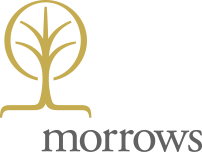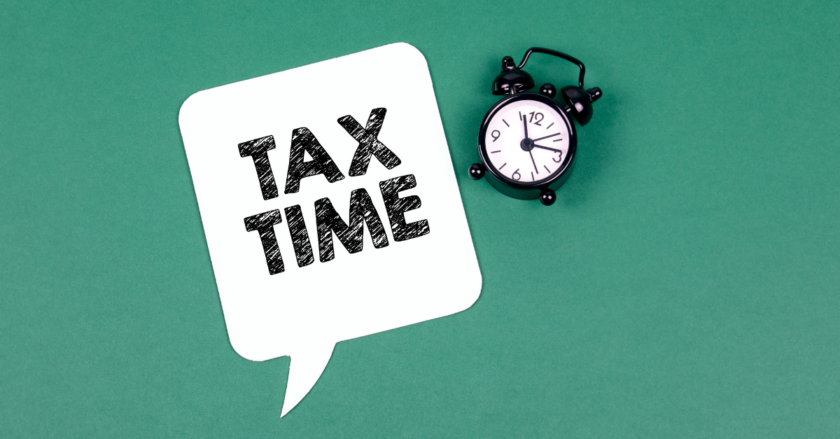With the end of the financial year approaching, now is an ideal time to discuss the actions and strategies related to you and your business.
Morrows takes tax planning before year-end seriously. Many of our clients take the opportunity to meet with their advisors to discuss their strategies ahead of time. Having a proactive approach will help you make better decisions not only to minimise tax but also to add value to your business or personal wealth investments
Let’s start with business matters, what should your finance team plan for?
Our Morrows advisors have taken the time to outline a few important business-related reminders to take note of this financial year.
Depreciation Benefits
Temporary Full Expensing of Depreciating Assets (FEDA): From 7:30pm AEDT on 6 October 2020 until 30 June 2023, temporary full expensing allows a deduction for:
- The business portion of the cost of eligible new depreciating assets for business with an aggregated turnover under $5 billion or for corporate tax entities that satisfy the alternative income test. The eligible new assets must be first held, and first used or installed ready for use for a taxable purpose, between 7:30pm AEDT on 6 October 2020 and 30 June 2023.
- The business portion of the cost of eligible second-hand assets acquired from 7:30pm on 6 October 2020 and first used or installed by 30 June 2023 for businesses with an aggregated turnover under $50 million.
- The business portion of the cost of improvements made to eligible depreciating assets. This applies even if those assets were acquired before 7:30 pm (AEDT) on 6 October 2020.
- The balance of their small business pool at the end of the income years ending between 6 October 2020 and 30 June 2023, for businesses with an aggregated turnover under $10 million. From 7:30pm (AEST) 12 May 2015 to 30 June 2023, the “lock out” rules are suspended to allow small businesses that choose to stop using the simplified depreciation rules to take advantage of temporary full expensing.
- You can make a choice to opt-out of temporary full expensing for an income year on an asset-by-asset basis if you are not using the simplified depreciation rules.
Prepaid Expenditure
Deduction for prepaid expenditure of up to 12 months (with an aggregated turnover of less than $50 million).
Employee Superannuation Guarantee Payments
Superannuation contributions for employees for the June quarter can be paid prior to 30 June 2022.
Superannuation contributions are tax deductible when the complying superannuation fund has received the funds, not when you have an obligation to pay like other expenses when accounting for on an accrual basis.
To make sure that external (not necessarily applicable to Self-Managed Super Funds) super funds receive your payments before 30 June end of financial year deadline. We suggest you check with your preferred Superannuation Clearing House as to the final date in June in which contributions are able to be made to employees.
From 1 July 2022, employers will be required to make super guarantee contributions to an eligible employee’s super fund regardless of how much the employee is paid.
Wages to Children
If your children work in the business, they may be paid as a regular wage-earning employee. To record their wages, you should document:
- Number of hours worked
- Hourly rate of pay
- Description of tasks performed
- Dates worked
Other Planning Options and Issues to Review
- Remunerating directors of companies / trust beneficiaries by a distribution rather than a wage and the savings on employee oncosts – please consult your Morrows advisor if you would like assistance with determining an effective remuneration package.
- Employee bonuses incurred during the 2021/ 22 financial year are deductible even when paid after 30 June 2022 provided there is documentation in place to support the bonus. You must be committed to paying the bonus – there must be an obligation.Prior to 30 June, you need to document how the bonus is to be calculated, to whom and authorised by a director’s minute.Similar rules apply to Directors fees.
- Write off Bad Debts and document.
- Consider deferring June Invoicing.
How about your personal taxes? What should you plan for?
Tax planning for end of financial year isn’t just important for businesses, it’s just as essential for individuals. Here are a few personal related reminders to take note of this year.
Superannuation Contributions
- From 1 July 2021, the general concession contributions cap is $27,500.
- Unused Concessional Cap Carry Forward: You may be entitled to contribute more than the general concessional contributions cap and make additional concessional contributions for any unused amounts.If your total superannuation balance is less than $500,000 on 30 June of the previous financial year, The carry-forward arrangements involve accessing unused concessional cap amounts from previous years.
- Government Co-contribution: To be eligible for the $500 government co-contribution subsidy you must make a non-concessional or member contribution to superannuation before 30 June 2022 of up to $1,000.To be eligible for the full co-contribution, your assessable income including reportable fringe benefits for 2021-22 year, must be under $41,112. The co-contribution will reduce progressively when your assessable income is $41,112 or over and is no longer available once your assessable income reaches $56,112.In addition, your total superannuation balance must be less than $1.6 million on 30 June 2021 (the year before the contribution is being made) and you have not exceeded your non-concessional contributions cap of $110,000 in the 2021-22 year.
- Tax Offset for Spouse Contributions: You could claim the 18% tax offset of up to $540, which is equivalent to $3,000 in contributions made to your spouse’s eligible super fund. You can claim the maximum tax offset of $540 in 2021-22 year if:- you contribute to the eligible super fund of your spouse, whether married or de-facto, and
– sum of your spouse’s assessable income, reportable fringe benefits and reportable employer superannuation contributions is less than $40,000 and the contributions were not deductible to you.
– both you and your spouse were Australian residents when the contributions were made
– when making the contributions you and your spouse were not living separately and apart on a permanent basis
– your spouse had not exceeded the non-concessional cap for the relevant year, nor had a total superannuation balance equal to or exceeding the general transfer balance cap ($1.7 million for 2021/22) immediately before the start of the financial year in which the contribution was made.
– Your spouse was under 75 years old when the contributions were made. - Downsizer Contribution: If you are 65 years old or older and meet the eligibility requirements, you may be able to choose to make a ‘downsizer’ contribution into your superannuation of up to $300,000 from the proceeds of selling your home. The downsizer contribution is not a non-concessional contribution and will not count towards your contribution caps. From 1 July 2022 the age requirement for a downsizer contribution is being reduced to age 60.
Home Office shortcut method
Allowing a tax deduction of 80 cents for each hour you work from home due to COVID-19 (“COVID-hourly rate”). You do not have to have a separate or dedicated area of your home set aside for working. This shortcut method covers all deductible running expenses including electricity, decline in value and repair of home office assets, cleaning expenses, phone costs, internet, computer, stationery and the like. The method ends on 30 June 2022.
Donations
When making donations, ensure they are in the name of the individual or entity that will receive the best benefit in relation to the deduction. That is, not an entity in a loss position or an individual with minimal income.
Do you have a Family Trust?
Have you done your trust distribution minutes? If you have a discretionary trust, then 30 June is an important date for you. Our advisors work closely with our clients to ensure they have the appropriate meetings and minutes to satisfy the Trust’s and ATO’s requirements. Here’s some important steps to make sure you’re ready:
1. Contact your advisor to organise an assessment of your Trust’s income position for the year and receive advice on an appropriate Trust distribution of that income;
2. Ensure your Trust Resolution Meeting is held; and is documented with Trustee minutes signed before 30 June 2022.
Taking these simple actions will give you the security and peace of mind to ensure your ATO compliance requirements are met.
What happens if you don’t comply? Any trust identified by the ATO that has not made a Trustee Resolution by 30 June 2022 will be considered non-compliant and will be liable to pay tax at the rate of 47% – is it worth the risk?
Have you booked in for your Tax Planning session?
Many of our clients take advantage of our personalised tax planning sessions. A proactive approach helps you make better decisions not only to minimise tax, but to also add value to your business or investments
If you haven’t scheduled a planning session with your Morrows advisor yet, please do. We invite all our clients to access the tax planning benefits, providing us with enough time to implement tax savings strategies. Reach out to your Morrows Advisor today, on 03 9690 5700 or email morrows@morrows.com.au.





